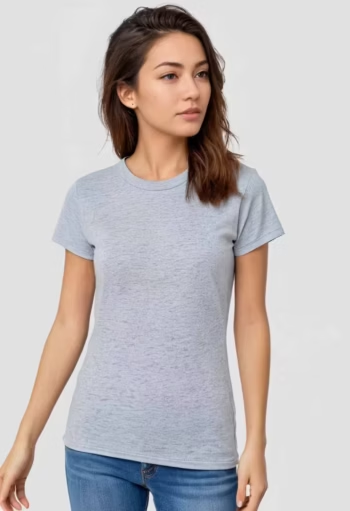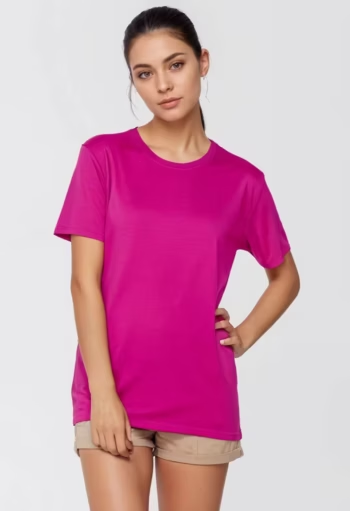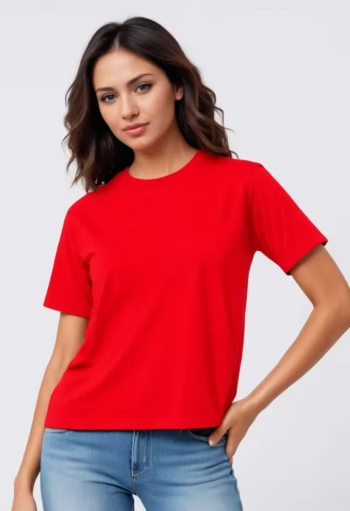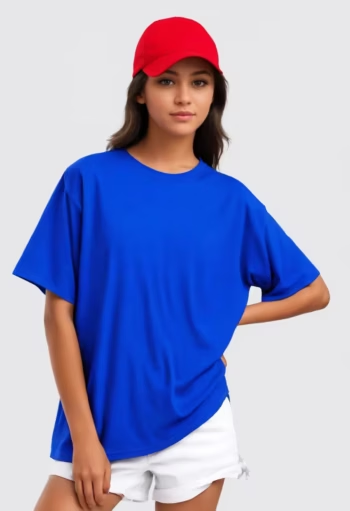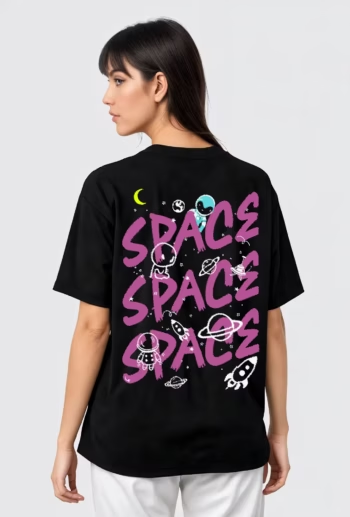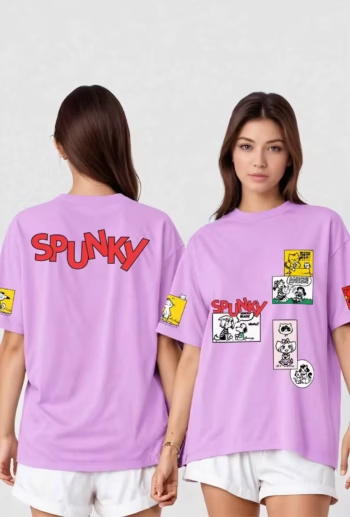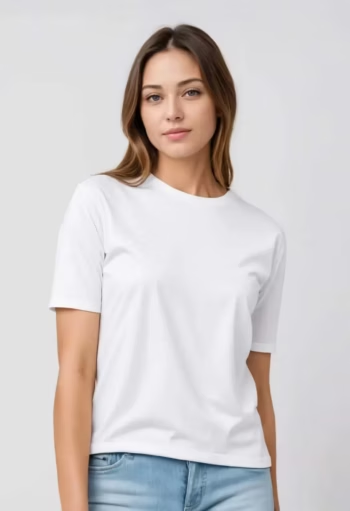Buy T-Shirts Online India:- Women T- Shirts of T-shaped construction were worn as early as the medieval times to protect the body from chafing by heavy, metal armor. Civilians adopted the shirt as a protective and hygienic barrier between the body and costly garments. Made of cotton or linen, the shirt was more easily washable than silk or woolen outer garments with complex ornamentation. These shirts were made with long tails that wrapped around the body serving as underpants. The shirt was still always worn with a waistcoat or vest and jacket over the shirt. Wearing a clean, laundered shirt showed off a gentleman’s wealth and gentility. Shirts changed very little in shape from their introduction in medieval times through the mid-nineteenth century. They were loose fitting, made of a woven fabric, and constructed with rectangular pieces that formed a T shape.
A T-shirt, or tee, is a style of fabric shirt named after the T shape of its body and sleeves. Traditionally, it has short sleeves and a round neckline, known as a crew neck, which lacks a collar. T-shirts are generally made of a stretchy, light, and inexpensive fabric and are easy to clean. The T-shirt evolved from undergarments used in the 19th century and, in the mid-20th century, transitioned from undergarment to general-use casual clothing.
They are typically made of cotton textile in a stockinette or jersey knit, which has a distinctively pliable texture compared to shirts made of woven cloth. Some modern versions have a body made from a continuously knitted tube, produced on a circular knitting machine, such that the torso has no side seams. The manufacture of T-shirts has become highly automated and may include cutting fabric with a laser or a water jet.
T-shirts are inexpensive to produce and are often part of fast fashion, leading to outsized sales of T-shirts compared to other attire. For example, two billion T-shirts are sold per year in the United States, or the average person from Sweden buys nine T-shirts a year. Production processes vary but can be environmentally intensive, and include the environmental impact caused by their materials, such as cotton which is both pesticide and water

